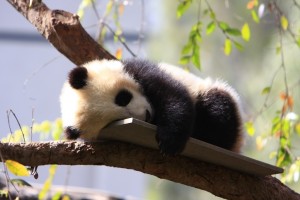Much of the focus on the zoo now has shifted towards its capacity as a resource for conservation, a resource now more crucial than ever with the burgeoning rate of endangerment and extinction of species in recent years (Rogers and Laffoley, 2011).
Recognising the need for more proactive action to be taken regarding conservation of plant and animal species before the earth’s biodiversity is irrevocably damaged, the global zoo community came up with the World Zoo and Aquarium Conservation Strategy in 2005, a plan for zoos to become standards for “integrative collection”, and to harness efforts for achieving this objective (WAZA, 2005). This integrative conservation comprises efforts for breeding endangered species outside of their natural habitats (ex situ), public education, expertise, research, and reinforcement of conservation of species in their natural habitat (in situ) (Catibog-Sinha, 2008).

For this effort, captive breeding is usually implemented in zoos. However, there are difficulties to this particular method of conservation, which compromises the success rate of restoring the numbers in a species.
A more heartening area of effort is research work for conservation and education, facilitated by the quantity and variety of species of flora and fauna in zoos (Mason, 2000; Mazur, 2001). Indeed, zoos contain approximately one million living animals globally (WCMC, 1992). This is an avenue with high potential for breakthroughs in conservation techniques via research, and one that should not be taken for granted.
Another measure of conservation is the concept of frozen zoos, in which zoos freeze plant or animal tissue, or both, in order to protect the genetic variability of species before they become extinct (Patrick and Tunnicliffe, 2013). The existence of animal-frozen zoos date back to the 1970s, first created in the San Diego Zoo (Linington, 2000). Three decades later, the Frozen Ark Project, which salvages endangered animal tissue in order to rescue the genetic material of these animal species, was created and zoos were asked to take part in the project (Clarke, 2009). This project supplements researchers’ work and expedites the creation of conservation techniques, even bolstering species restoration efforts, by providing huge databases of such tissues for study.
It is not just experts and zoos who can play a part in wildlife conservation efforts; normal individuals can also be instrumental in conservation as well. When large numbers are needed in an initiative or programme where expertise is not necessary, ordinary citizens also have the ability to help out, and such people are termed citizen conservationists. These are people who “are inspired to take action in caring for natural resources, maintaining local wildlife habitats, and participating in local environmental conservation efforts” (Patrick and Tunnicliffe, 2013). Adequate education about conservation issues can provided by zoos, with emphasis on how every person, experienced or not, expert or not, can make a big difference in conservation efforts. In turn, visitors to the zoo may find more than their cognitive and affective viewpoints being changed, and they will be more likely to reflect this change not just in cognition but also in outward behaviours.

